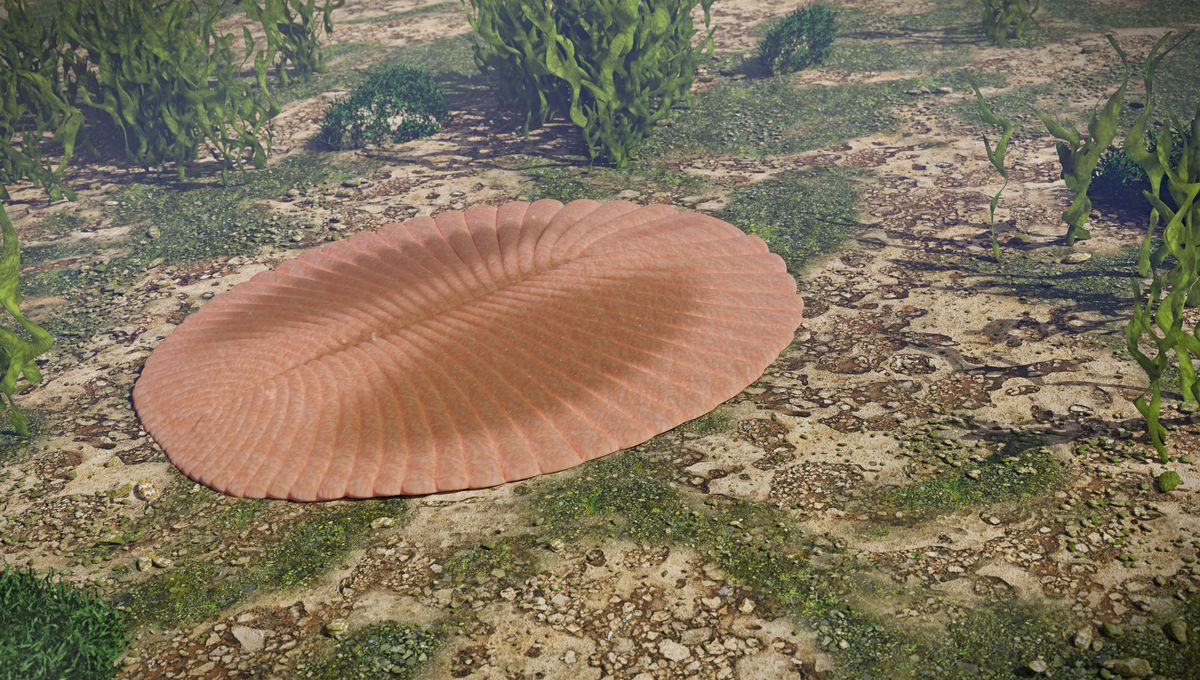
The Earth’s magnetic field has changed direction many times over millions of years, sometimes accompanied by temporary weakening. A much longer period in which the field diminished took place between 591 and 565 million years ago. Shortly thereafter, the first fossils of complex animals appear in the geologic record. A new study suggests it might be that weakening that made this possible, despite the apparent contradiction with the field’s role in making life possible.
The geomagnetic field is one of the things that sets Earth apart from Venus and Mars. It has helped the Earth resist the stripping of its atmosphere the solar wind would otherwise have induced, and acted as a shield against coronal mass ejections that would bathe the planet in radiation. Searches for life beyond the Solar System assume a powerful magnetic field is a requirement, at least for life at the surface rather than deep inside a planet.
This importance leads to periodic fears about the possibility of a weakening, but attempts to link previous downturns in field strength to mass extinctions have generally come to nothing. Instead, new research suggests one of the most important events in life’s history was facilitated by a softening of the barrier between the Earth and space radiation.
The field’s strength and direction over Earth’s history can be read in rocks that retain a record of the local field at the time they formed, provided subsequent heat has not wiped the tape. Professor John Tarduno of the University of Rochester and colleagues explored a sample of plagioclase crystals from the Passo da Fabiana Gabbros, Brazil, laid down 591 million years ago. They found evidence for the lowest field ever recorded, one-30th of the modern level, and also much lower than earlier dates.
Drawing on other studies, the authors argue fields below 10 percent of today’s persisted for at least 26 million years, including one of the most vital periods for life in Earth’s history.
Although the first animals are thought to have appeared somewhat earlier, they were microscopic, or stationary species like modern-day sponges. The first active creatures, known as the Ediacaran fauna, appear in the fossil record around 560 million years ago. It is believed a rise in oxygen in the atmosphere, and consequently dissolved in the ocean, was the necessary ingredient for the arrival of complex and highly mobile animals, although how much extra oxygen was present remains uncertain.
This makes that rise in oxygen one of the great game-changers of all time, but the reasons for it are still unclear. Tarduno and co-authors think the weakening of the magnetic field around this time could have been key.
There’s little doubt that a weaker field will translate to more hydrogen escaping from the atmosphere. With less of the element free to bond with oxygen, there would be an opportunity for the planet’s atmosphere to change in a life-enhancing way.
What is much less clear is whether the effect of the weaker field would be sufficient to make a significant difference. After all, much of the oxygen released through hydrogen scarcity would bond with other elements instead.
The authors acknowledge it is hard to model how much more oxygen a weaker field would make available. “Quantifying [hydrogen] loss for Earth with an ultra-low field is challenging as it is observationally inaccessible,” they write. Existing models predict an increase in hydrogen loss of anything from 30 to 1,000 percent, and this enormous variation makes for plenty of uncertainty about the resulting oxygen increase.
Nevertheless, the authors consider a rise sufficient to enable the Ediacaran fauna to be plausible. “The highest estimates could result in a few percent change of oxygen … that might represent a perturbation or crossing of a threshold, allowing Ediacaran animal diversification.”
They propose the protective field could have shrunk so much that plasma in the upper atmosphere became exposed to the solar wind, greatly increasing the loss of hydrogen ions. One factor others have not taken into account is that increased exposure to highly charged particles from the Sun could produce more nitrogen oxides, which create ozone holes like the one humanity made with CFCs. This, in turn, would expose the lower atmosphere to extra ultraviolet radiation, which can split water vapor into hydrogen and oxygen, with some of the extra hydrogen escaping before recombination.
No one knows quite why the Earth’s field dropped at this time. However, it’s possible that if we’re looking for planets with not just life, but advanced life like our own, we need them to have strong magnetic fields that take an extended holiday at just the right time.
The study is open access in Communications Earth & Environment.
Source Link: Earth's Magnetic Field's "Near-Collapse" 590 Million Years Ago May Have Helped Complex Life